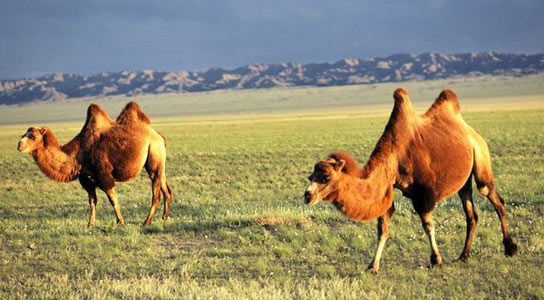Bactrian Camel Genome Might Help Survival in Harsh Environments
November 14, 2012

Photograph by George F. Mobley
The scientists published their findings in the journal Nature Communications. Chinese and Mongolian researchers have begun to unravel the genomic particularities behind the tricks that allow camels to survive in harsh conditions.
Usually, researchers exploring new genomes are interested in the rapidly evolving sections. These typically contain the genes that define a species, coding for certain characteristics that set it apart from its closest genetic relatives.
“We found that many genes related to metabolism are under accelerated evolution in the camel, compared with other even-toed ungulates such as cattle,” states Yixue Li, co-author from the Shanghai Center for Bioinformation Technology in China.
Camels, like other ruminants, digest food by chewing the cud. Many of the Bactrian genome’s rapidly evolving genes regulate the metabolic pathway, implying that camels do something very different with the nutrients after digestion. This could indicate how Bactrians produce and store energy in the desert.
The study shows that camels can also withstand massive blood glucose levels due to changes in genes that are linked to type II diabetes in humans. Some of the rapidly evolving genes include ones that regulate insulin signaling pathways. A closer study on how camels respond to insulin might help unravel how insulin regulation and diabetes work in humans.
In humans, the gene CYP2J controls hypertension. Suppressing it leads to high blood pressure. Camels have multiple copies of the gene, which could keep their blood pressure low even when they consume a lot of salt.
No comments:
Post a Comment